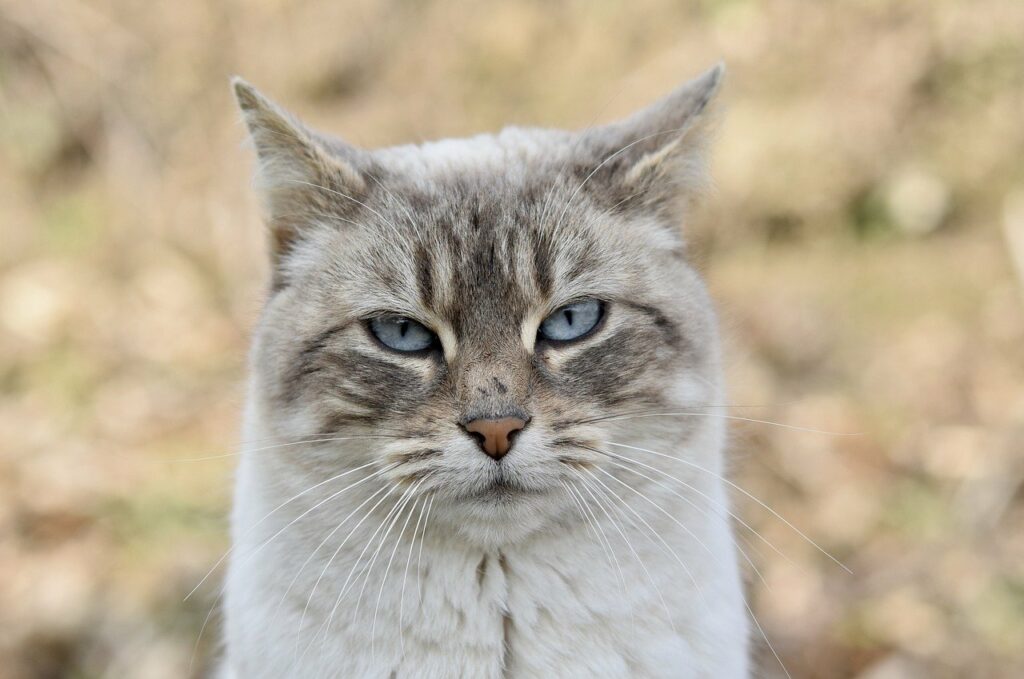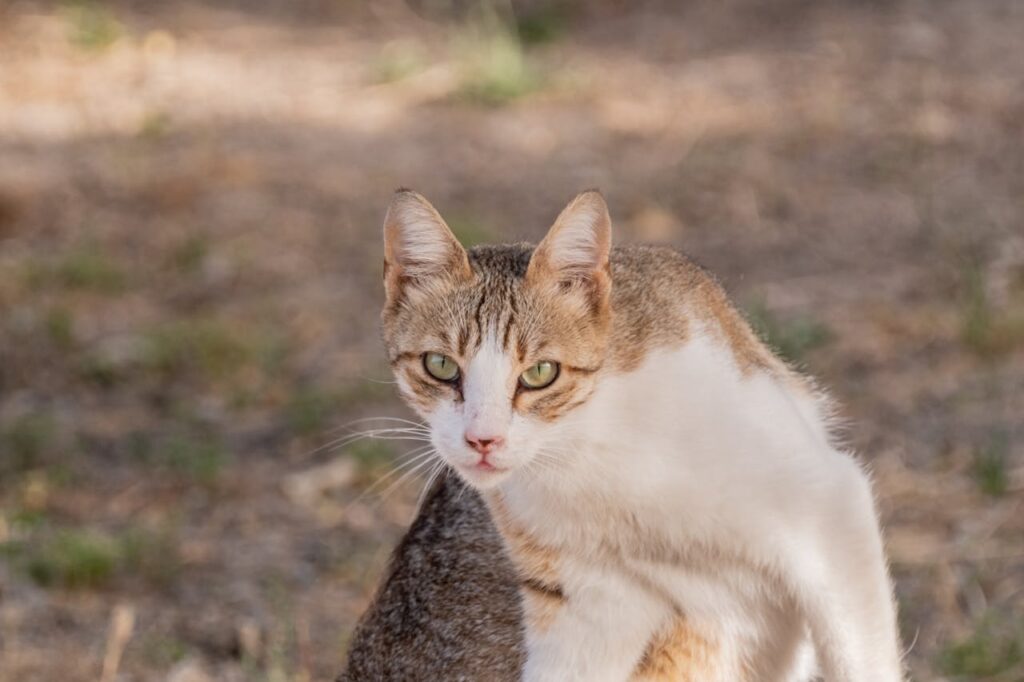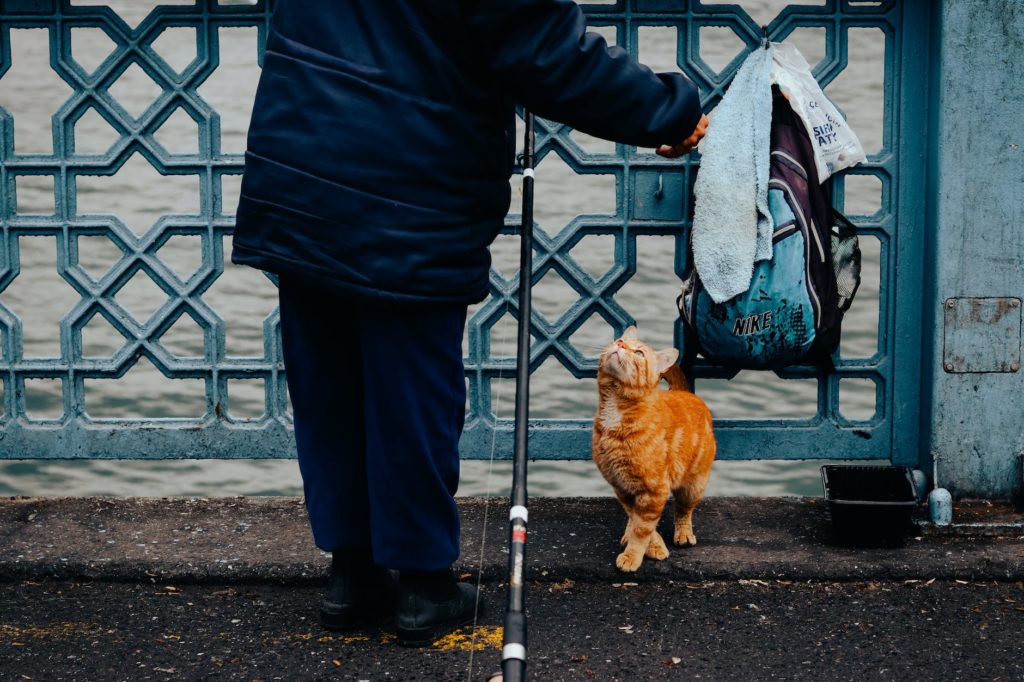Stop Cats Inappropriate Peeing
Inappropriate Peeing, Spraying, Toy Obsession And Leg And Hand Nipping are common behavioral problems that can arise in pets, particularly in dogs and cats. These problems can be quite frustrating for pet owners and can even lead to the surrender of the pet to a shelter. However, with the right knowledge and approach, it is possible to overcome these issues and create a happy, healthy, and harmonious relationship with your furry friend.
Live Pee Free! Odor Eliminator 100% Eliminates Pet Odor on Contact. 20% Off. No Enzymes, No Fragrance, No Detergent, No Bleach – Safe for Kids and Pets.Unlock a Happier Cat Today!
When it comes to sharing our homes with feline companions, we often encounter behaviors that leave us perplexed. From inappropriate peeing to obsessive play, these issues can be frustrating for both cats and their owners. Stop Cats Inappropriate Peeing. However, with a proactive approach and helpful strategies, we can cultivate a harmonious environment that returns joy to our lives. Here are nine brilliant solutions to address these common feline challenges, ensuring a happier and healthier relationship with your furry friend.
Table of Contents
Effective Strategies for Addressing Common Cat Behaviors
As a dedicated cat owner, you may find yourself grappling with various behavioral challenges your feline companion exhibits. Stop Cats Inappropriate Peeing. From inappropriate urination to compulsive toy fixation, these behaviors can be frustrating and potentially harmful to both your cat’s well-being and your home environment. Understanding the underlying motivations for these actions, combined with proactive strategies, can lead to a happier, healthier relationship between you and your furry friend. Let’s explore comprehensive solutions to address common cat behaviors in depth.
1. Understanding the Root Causes
Before delving into solutions, it’s critical to comprehend why cats engage in problematic behaviors. To stop inappropriate peeing or spraying, understanding the underlying reasons is paramount. Stop Cats Inappropriate Peeing. Often, these actions stem from stress, territorial issues, or medical conditions.
Environmental Triggers
Cats are creatures of habit; any sudden change in their environment can induce anxiety. Thus, be aware of upheavals such as moving homes, the introduction of new pets, or even changes in your routine. For instance, a move to a new home can be particularly disorienting for a cat, leading to increased stress levels. Stop Cats Inappropriate Peeing. Other factors, such as loud noises from construction or even a change in family members, can also impact a cat’s sense of security.
Medical Considerations
In addition to environmental factors, it’s crucial to consider health-related issues. Urinary problems can manifest as inappropriate elimination. For cats, these behaviors are not merely a matter of disobedience; they signal discomfort or distress. Stop Cats Inappropriate Peeing. Therefore, it’s essential to observe your cat’s habits closely. Changes in drinking or eating patterns, litter box usage, and overall demeanor can offer insights into potential health concerns.
Professional Consultation
Consult with your veterinarian if abnormal behaviors become apparent. Baseline blood tests or urinalysis can help to rule out medical issues before you assume that behavioral modification is required. Stop Cats Inappropriate Peeing. Vets can offer advice tailored to your cat’s health needs and may recommend specific tests or referrals to behaviorists if necessary.
2. Creating a Stress-Free Environment
One of the most effective methods to stop inappropriate peeing is to create a calming and stress-free environment for your cat. Stop Cats Inappropriate Peeing. Cats thrive in spaces that feel safe and familiar.
Designated Safe Spaces
Transitioning into a new home or rearranging furniture can disturb their comfort levels. To mitigate stress related to change, establish a designated area for your cat with cozy bedding, scratching posts, and toys that they love. Stop Cats Inappropriate Peeing. This area should be quiet and away from noisy household activities, offering a sanctuary they can retreat to whenever they feel overwhelmed.
Vertical Spaces
Consider adding vertical spaces, such as cat trees or shelves. Cats are natural climbers and providing them with vertical territory can reduce their anxiety and give them a sense of security. Stop Cats Inappropriate Peeing. Cats often feel more confident when they’re elevated, allowing them to survey their surroundings from a safe vantage point.
Familiar Scents and Soothing Products
Additionally, familiar scents can help ease tension. Utilize pheromone diffusers or sprays, which mimic natural feline pheromones, to create a soothing atmosphere. Stop Cats Inappropriate Peeing. Products like Feliway can signal safety and comfort to your cat, helping to alleviate stress in new or challenging situations.
3. Reinforcing Litter Box Habits
If you are determined to stop inappropriate peeing, addressing litter box habits is crucial.
Maintaining Cleanliness
Regularly cleaning the litter box helps ensure that your cat feels comfortable using it. Stop Cats Inappropriate Peeing. A dirty environment can deter your cat from using the litter box, leading to accidents around the house. Scoop out waste daily and perform a deep clean every week using unscented soap to maintain hygiene. Consider using disposable liners to make cleaning more manageable.
Litter Choices
Additionally, consider the litter type. Cats can be finicky about textures and scents. Trial and error may be necessary to find a litter your cat prefers. Stop Cats Inappropriate Peeing. Avoid scented litters, as they may be off-putting. Be mindful of the placement of the litter box as well—quiet, accessible locations usually work best.
Adequate Box Space
If multiple cats inhabit your home, the rule of thumb is to have one litter box per cat, plus one extra, to reduce territorial disputes. Stop Cats Inappropriate Peeing. Observe your cats’ behaviors closely; if they appear to be avoiding the litter box, you might need to re-evaluate the litter or location.
4. Addressing Compulsive Toy Obsession
Many cat owners notice their pets displaying obsessive behavior towards toys, whether it’s an inordinate amount of pouncing or a fixation on a single object.
Boredom Indicators
While play is essential for mental stimulation, excessive toy obsession can indicate boredom or anxiety. Stop Cats Inappropriate Peeing. To stop this cycle, rotate toys regularly to maintain your cat’s interest. By providing a variety of textures, sizes, and shapes, your feline friend will remain engaged, and this rotation strategy prevents desensitization to toys, keeping playtime fresh and fun.
Interactive Toys
Moreover, interactive toys can help manage excessive obsession. Toys that challenge your cat mentally or require them to engage actively can provide an outlet for energy. Stop Cats Inappropriate Peeing. Consider puzzle feeders that dispense treats, which can stimulate your cat’s hunting instincts and divert their obsessiveness towards healthier forms of play.
5. Utilizing Positive Reinforcement
Implementing positive reinforcement is a powerful tool when trying to stop inappropriate behaviors.
Rewarding Good Behavior
Cats respond remarkably well to rewards when they display desired behaviors. Stop Cats Inappropriate Peeing. If your cat uses the litter box correctly, praise them or offer a treat. This strategy fosters a positive association with appropriate actions and cultivates good habits over time—reinforcing the notion that correct behavior yields rewards.
Redirecting Undesired Behaviors
This approach also applies when addressing nipping or biting behaviors. Rather than punishing your cat for these actions, redirect their focus with a toy. Stop Cats Inappropriate Peeing. Whenever they nibble during playtime, divert their attention and engage them with appropriate alternatives. This strategy not only diminishes undesired behavior but also strengthens your bond by fostering shared play experiences.
6. Understanding and Redirecting Nipping Behavior
Inappropriate nipping can be a source of frustration for many cat owners. However, it’s crucial to understand this behavior often stems from instinctual hunting and play aggression.
Differentiate Playful and Aggressive Nipping
To stop nipping, owners should first discern the difference between playful nipping and aggression. Playful nipping occurs during interactive play; it may involve your cat trying to catch your hand or a toy. In contrast, aggressive behavior typically arises when a cat feels threatened or overstimulated.
Channeling Energy
To redirect this behavior, offer a diverse array of toys and engaging activities. Stop Cats Inappropriate Peeing. Fostering a playful environment helps channel your cat’s energy productively. Introducing wand toys or laser pointers allows them to expend energy in a way that satisfies their predatory instincts without resorting to biting human skin.
Interactive Games
Encouragement through interaction can diminish the urge to nip and instill appropriate behavior during playtime. Stop Cats Inappropriate Peeing. Try to implement scheduled play sessions to meet their needs for physical and mental stimulation.
7. Keeping Your Cat Stimulated
Cats are naturally curious and require mental and physical stimulation to thrive.
Outlet for Natural Behaviors
Boredom can lead to various problematic behaviors, including inappropriate peeing and obsessive play. Stop Cats Inappropriate Peeing. To combat boredom, invest time in stimulating activities and provide a variety of toys. Incorporating play sessions into your daily routine enhances your bond while keeping your cat active and engaged.
Enriching Environments
Furthermore, consider enriching your home environment with cat-safe plants or climbing structures. Stop Cats Inappropriate Peeing. Engaging your cat in these activities allows their natural instincts to shine and gives them an outlet for their energy, making it easier to manage any inappropriate behaviors over time.
Exploring Outdoor Experiences
If feasible, consider supervised outdoor time in a secure environment or catio (a fenced-in outdoor area) so your cat can explore safe wilderness without losing the secure feeling of home. Nature can be incredibly stimulating for a cat, offering various sights, sounds, and smells.

8. Regular Veterinary Check-Ups
It is crucial not to overlook the importance of routine veterinary visits in your cat’s life.
Health Monitoring
Behavioral issues can frequently point to underlying medical problems, and regular check-ups help prevent and address these conditions. Stop Cats Inappropriate Peeing. Ensure that your cat receives regular vaccinations, dental check-ups, and screenings for common ailments such as diabetes or hyperthyroidism that can cause behavioral changes.
Early Diagnosis
If your cat begins to display unusual behaviors, such as inappropriate peeing or sudden aggression, schedule an appointment with your veterinarian promptly. Stop Cats Inappropriate Peeing. An early diagnosis can make all the difference in your cat’s well-being. Once any medical concerns are addressed, you can explore behavioral interventions with greater confidence.
9. Finding Professional Help If Necessary
Sometimes, despite our best efforts, we might not achieve the desired results on our own.
Seeking Expert Guidance
If you find yourself overwhelmed by your cat’s behaviors, consider enlisting the help of a feline behaviorist. Stop Cats Inappropriate Peeing. These professionals can analyze the circumstances surrounding your cat’s actions and provide personalized strategies tailored to your unique situation.
Collaborative Approach
Behaviorists can also work alongside you and your veterinarian to ensure a holistic approach to treatment, increasing the chances of resolving issues effectively. Remember, there’s no shame in seeking help. Stop Cats Inappropriate Peeing. A calmer, happier cat can be your future; investing in professional assistance demonstrates your commitment to their well-being.
10. Keeping a Journal
An often-overlooked aspect that can significantly help your understanding of your cat’s behavior is to maintain a journal.
Tracking Behaviors
By keeping a detailed record of your cat’s behaviors, including when they occur, any triggers you notice, and your cat’s daily activities, you can establish patterns. Stop Cats Inappropriate Peeing. This documentation can be invaluable when discussing behavior with your veterinarian or a behaviorist, making it easier to identify any underlying issues.
Notable Observations
Include notes on changes to their environment and interactions with other pets or people, as this may help indicate stressors or changes that need addressing. Noticing small things, like the time of day your cat acts out, can also help in strategizing better interventions.
Understanding Inappropriate Peeing and Spraying
One of the most common problems pet owners face is inappropriate peeing and spraying. Inappropriate urination can be caused by a variety of factors, including medical conditions, anxiety, territorial marking, or lack of proper training. It is important to identify the underlying cause of the behavior in order to address it effectively.
If you suspect a medical condition is causing the problem, you should take your pet to the veterinarian for a checkup. Once any medical issues have been ruled out, you can focus on addressing behavioral causes.
Training your pet to use a litter box or designated outdoor area can be an effective solution. You can also consider using pheromone sprays or diffusers to help reduce anxiety and stress in your pet.

Dealing with Toy Obsession
Another common behavioral issue in pets is toy obsession. Some pets can become overly attached to their toys, to the point where they may become aggressive or anxious when their toys are taken away. This can be especially problematic if the toy is a choking hazard or if it is causing damage to your furniture or belongings.
To address this issue, you can try gradually weaning your pet off of their toy by introducing other toys or activities that they enjoy. You can also consider using positive reinforcement training to reward your pet for letting go of their toy and playing with other things.
Managing Leg and Hand Nipping
Leg and hand nipping is a behavior that is most commonly seen in puppies and kittens. This behavior is usually a result of teething or playfulness, but it can be quite painful for pet owners.
To address this issue, you can provide your pet with plenty of chew toys and redirect their attention to those toys when they start nipping at your legs or hands. You can also try teaching them the “leave it” command to discourage the behavior.
Conclusion
Managing and modifying your cat’s behaviors takes patience, understanding, and a willingness to adapt to your cat’s needs. By understanding the root causes of these behaviors, creating a stress-free environment, reinforcing positive habits, and seeking professional assistance when necessary, you can make significant strides toward a harmonious relationship with your feline friend.
A happy cat is a well-cared-for cat, and investing time and effort into their well-being pays dividends with a loving, balanced companion. Each cat is unique, and finding what works best for yours requires commitment, but the journey is rewarding, leading to a thriving household for both you and your beloved pet.

In conclusion, addressing inappropriate peeing, spraying, toy obsession, and nipping in your cat requires a multifaceted approach. As challenges arise, maintaining observance, reinforcing positive behaviors, ensuring an engaging environment, and seeking professional guidance when needed will unlock a happier cat and a more harmonious home. Each step you take is an investment in your pet’s well-being and the overall quality of life that you both share.



